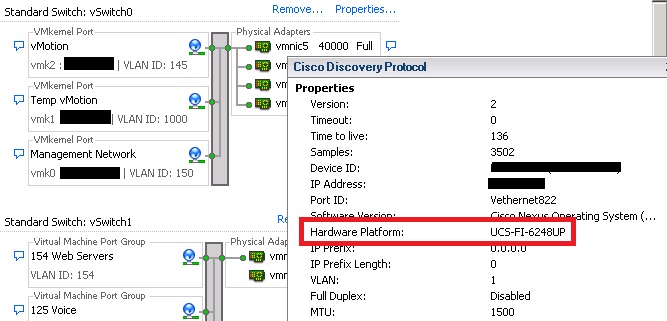Good day,
Route based on Virtual Port ID works just fine in most cases. This means MAC-hash would work fine, as well, perhaps with more distributed traffic flows. The ESXi host does not know about the vPC configuration from the Fabric Interconnects to the Nexus' and therefore, configuring IP-hash for an ESXi host in a blade server does not make sense in most cases. If you have Enterprise Plus licensing, Load-based Teaming may be a better option. If you're required to separate traffic across links, like IP storage traffic, for instance, you can use Static Uplink Pinning.
You should configure your Chassis Discovery Policy to use a port-channel if at all possible. This is from the chassis I/O module to the Fabric Interconnects, as you know, and comes with all the greatness that is LACP: single logical link for load-balancing and failover although admittedly, the UCS does a fine job of basic load-balancing across available links. If you don't use a port-channel here and also don't configure a vNIC for fabric failover, a failure of that vNIC's path from the chassis I/O module to the Fabric Interconnect will result in a loss of connectivity for that vNIC. It will not get re-pinned to another link in the fabric and it won't failover to the other fabric. Use a port-channel.

Remember your ESXi hosts will see the Fabric Interconnects at their directly connected switch, even in End-Host mode. From here, you essentially treat the ESXi host connectivity as if each host were connected to separate switches, something like a Cisco 4500-series switch without multi-chassis link aggregation. As far as the ESXi host is concerned, that's how it sees the Fabric Interconnects, two separate switches and two separate fabrics. It's not like connecting a rack-mounted ESXi host directly to the 5k, in which case you'd have the reasonable option to use LACP and vPCs.

As a design decision, you can choose to let VMware do the failover (as you would traditionally with a rack server) or you can configure the UCS to failover vNICs (choosing to configure fabric failover for created vNICs). I usually let VMware perform the failover because it does a fine job.

Grab a whiteboard and trace out the traffic flows should you have a fabric failure for various configuration scenarios.
-----------------------------------------
Please consider marking this answer "correct" or "helpful" if you found it useful.
Mike Brown
VMware, Cisco Data Center, and NetApp dude
Consulting Engineer
michael.b.brown3@gmail.com
Twitter: @VirtuallyMikeB
Blog: http://VirtuallyMikeBrown.com
LinkedIn: http://LinkedIn.com/in/michaelbbrown